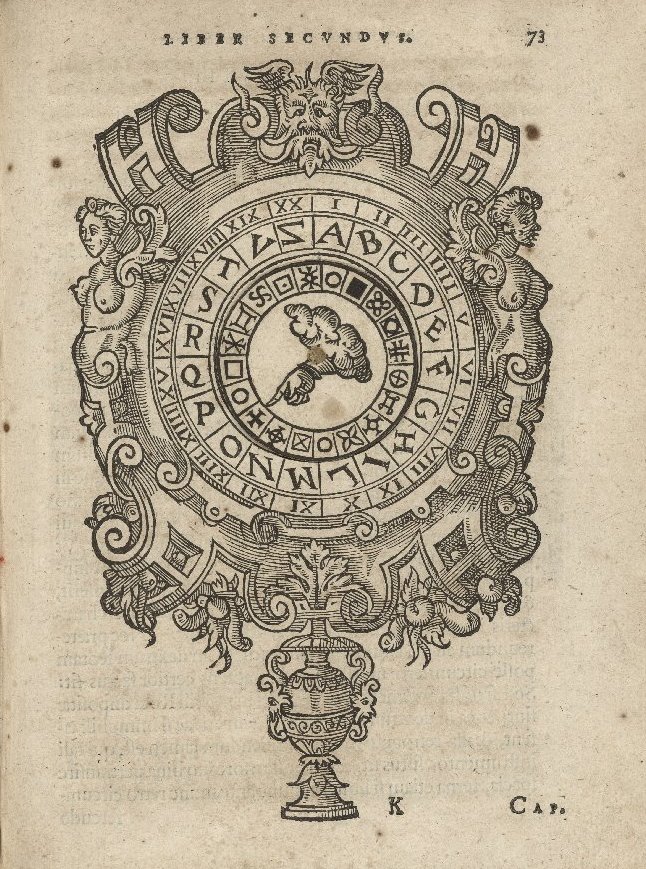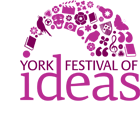Cracking the code
Professor Bill Sherman, Professor John Clark, Sir Dermot Turing, and Dr Rene Zandbergen
 Courtesy of the Folger Shakespeare Library
Courtesy of the Folger Shakespeare Library
- Saturday 20 June 2015, 11.00AM to 12.15am
- Free admission
Booking required
Book tickets - Ron Cooke Hub, University of York (map|getting to campus)
![]()
Wheelchair accessible.
Event details
![]()
Keynote address by Professor Bill Sherman, Director of Research, V&A on Decoding the Renaissance: 500 Years of Codes and Ciphers
Followed by Panel Discussion with:
- Professor John Clark, Department of Computer Science, University of York
- Dr Rene Zandbergen, Voynich Manuscript expert
- Sir Dermot Turing, nephew of Alan Turing and Trustee of the Bletchley Park Trust
- Professor Bill Sherman, Director of Research at the V&A, and University of York
Speaker biographies
Professor Bill Sherman’s research is driven by a love of archives and other collections, and an interest in how objects from the past come down to us, what they pick up along the way and how they speak across time and space. He has published widely on the history of books and readers and the plays of Shakespeare and his contemporaries; and much of his current work explores the interface between word and image and the relationship between knowledge and power.
He is working on a study of visual marginalia called The Reader's Eye, a collection of essays on Renaissance Collage (edited with Juliet Fleming and Adam Smyth), a reconstruction of the art- and book-collections of Walter and Louise Arensberg (with Mark Nelson) and an edition of Christopher Marlowe's The Jew of Malta (edited with Chloe Preedy for Arden Early Modern Drama).
His exhibition, Decoding the Renaissance: 500 Years of Codes and Ciphers, ran at the Folger Shakespeare Library from November 2014 to March 2015.
Bill is on secondment from the University of York, where he was Director of the Centre for Renaissance and Early Modern Studies (CREMS) from its creation in 2005 to 2011. He has held visiting positions at Caltech, Queen Mary (University of London) and Keio University (Tokyo), and fellowships at the Folger, Huntington, New York Public Library, National Maritime Museum and Bard Graduate Center.
Professor John Clark studied Mathematics and then an MSc in Applied Statistics at Oxford. He then joined the security division of the software and systems house Logica in 1987, working as a security and high integrity software evaluation consultant to HMG and then on a security ‘R & D’ think-tank for HMG. He joined the University of York in 1992.
His personal and supervised research work concentrates on aspects of security and software engineering (with a particular interest in applying heuristic computing and other AI to these areas).
Dr Rene Zandbergen is a long-term researcher into the Voynich Manuscript, and, along with Gabriel Landini, one of the developers of the European Voynich Alphabet.
Sir John Dermot Turing was educated at Sherborne and King’s College, Cambridge. After completing his DPhil in Genetics at New College, Oxford, Dermot moved into the legal profession working first for HM Treasury Solicitor’s Department and then for Clifford Chance where he has remained (as a partner since 1999.) Dermot is currently based in London in Clifford Chance’s Financial Services and Markets Group and his professional focus is on regulation, insolvency and risk management for financial institutions.
Dermot is the nephew of Alan Turing (1912-1954), who is well known to have been one of Bletchley Park’s leading cryptanalysts as well as a founder of the science of artificial intelligence. Naturally enough, Dermot has followed closely the gradual revelation of the achievements of the Bletchley codebreakers from the first release of materials in 1975 and the re-opening of Bletchley Park to the public in the early 1990s.
Tickets
You may also like...
This event is part of the Surveillance, Snowden and Security festival theme. Also in this theme:

